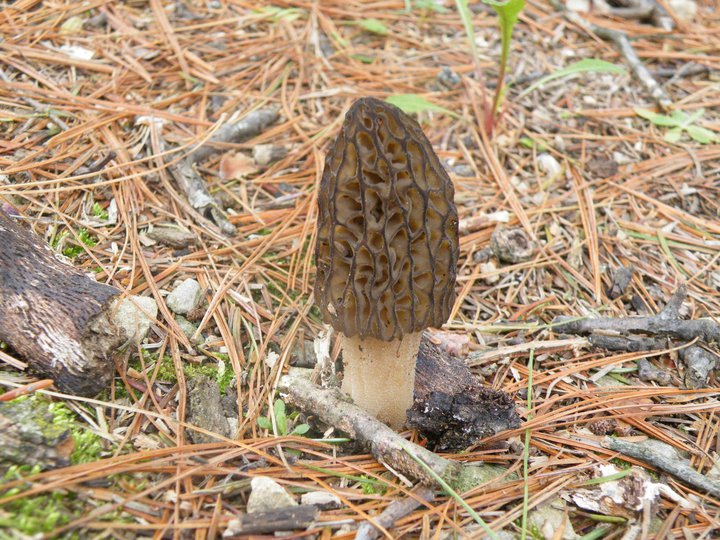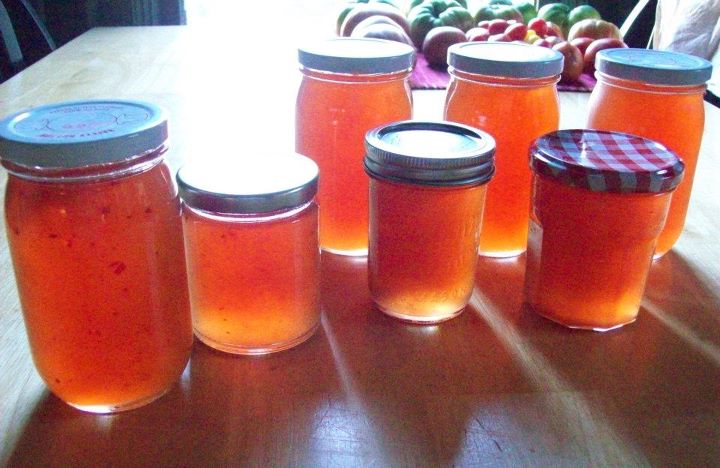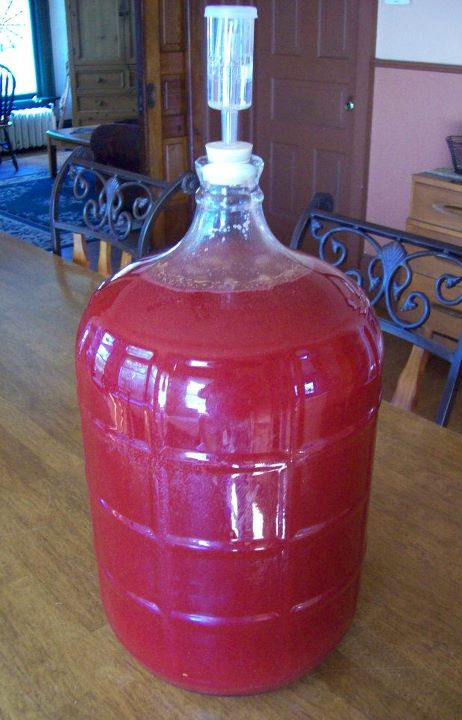We went salmon fishing a few times this autumn and did fairly well, catching several. We released some of them because they were too far into their spawning run and were therefore too dark for good eating, but a few had enough good color and firmness to keep. Two or three big females we caught and kept also had excellent stores of roe.
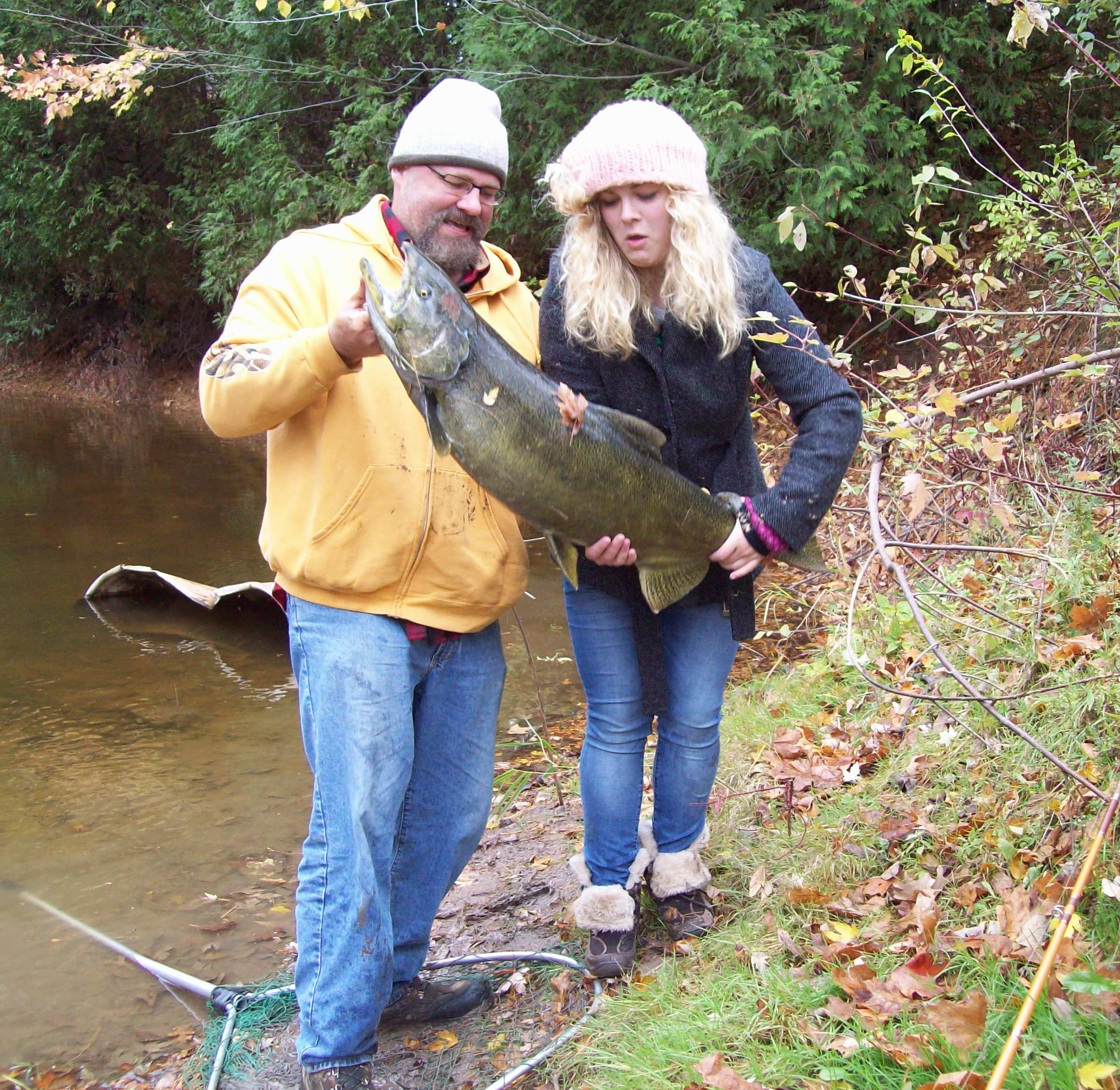
In the past, while I've reserved some of the eggs for eating I've usually just collected most of the skeins and had simply frozen them for later use as fishing bait. But with salmon roe going for anywhere between $6 and $9 or higher per ounce there is plenty of incentive to make use of this delicacy in the kitchen.
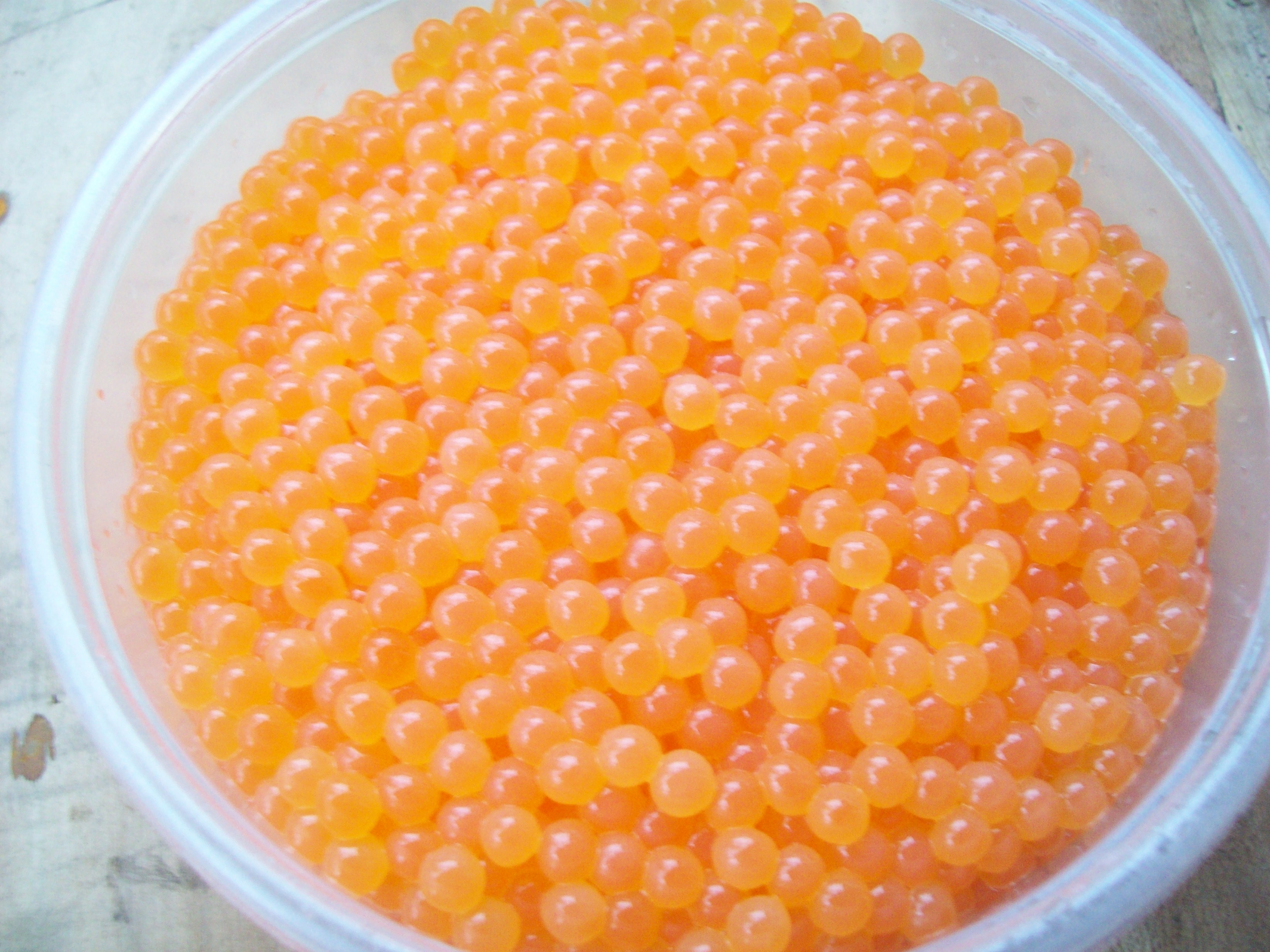 Step 1: rinse/clean the salmon eggs
Step 1: rinse/clean the salmon eggs
We'll try to add a few recipes that make use of roe when we make something we think you might enjoy as well. You'll probably have good results with salmon roe in dishes that combine it with other ingredients such as goat cheese, chives, farm eggs, mayonnaise, peppers, and certain fairly intense cheeses. Basically, wherever you might use anchovies, like on pizza, in spring rolls or as part of some tapas plates, you can use salmon roe.
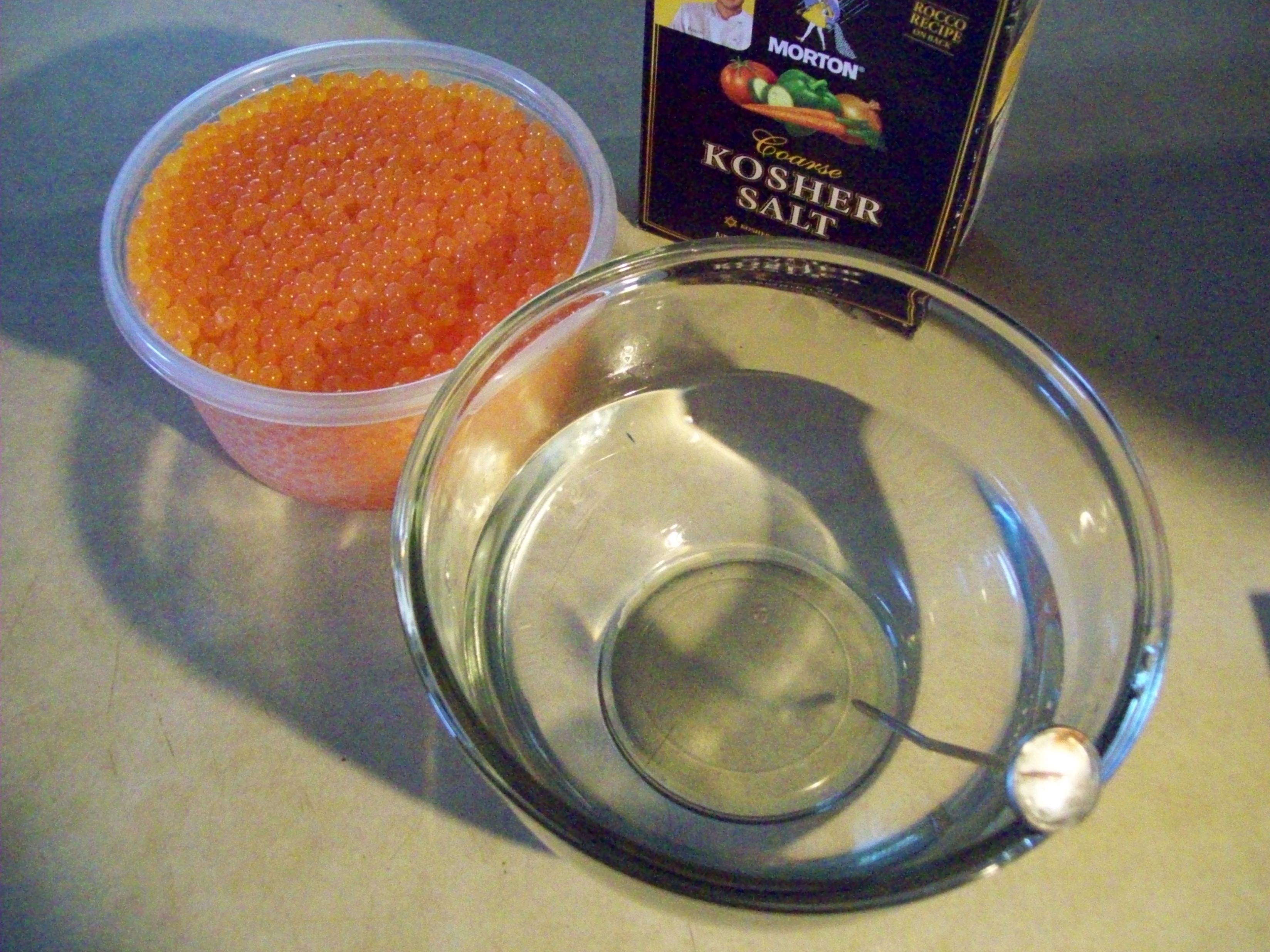 Step 2: dissolve Kosher salt in warm water
Step 2: dissolve Kosher salt in warm water
Here's a simple recipe to cure or temporarily preserve fresh salmon roe. I'd also suggest letting yourself play with this in anyway that strikes your fancy. Try any number of curing or pickling ingredients (gin or vodka, hot peppers, garlic, cucumber, herbs, etc). It's quite all right if some attempts don't turn out so great; you might hit upon something that is totally awesome.
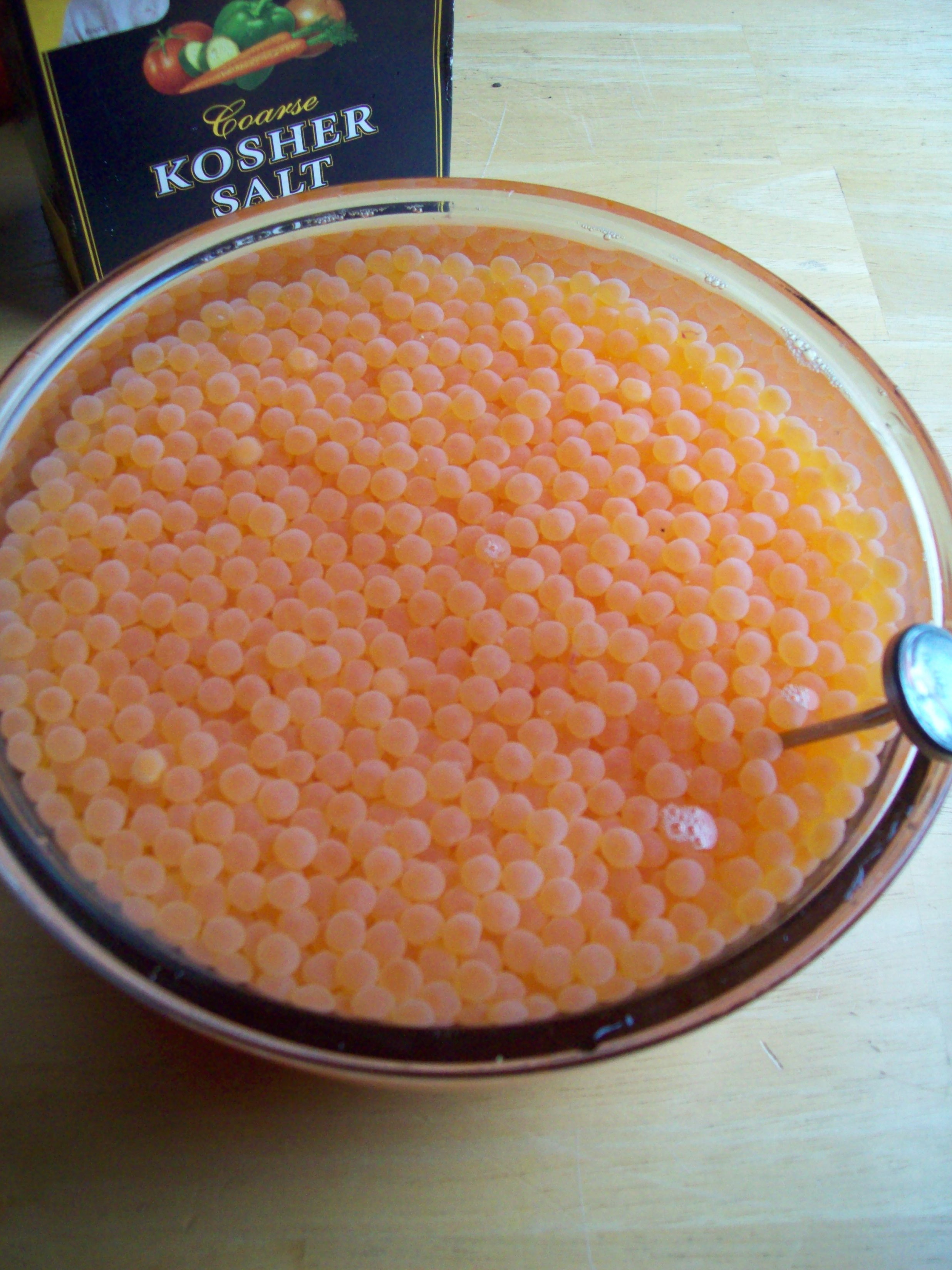 Step 3: add eggs to salted water and let cure for 2-3 hours
Step 3: add eggs to salted water and let cure for 2-3 hours
Ingredients:
- Salmon Roe
- Kosher Salt
- Water
- Dark beer
- Sugar
Here's the recipe I used to beer brine cure around 3 lbs of fresh roe (steps correspond with images):
- Rinse the eggs if they're loose and free of the skein (the membrane that holds the whole bunch together) to get rid of any bits of blood bits. If they're still in the skein rinse it thoroughly.
- Add and dissolve between 1/3 to 1/2 cup Kosher salt into around a quart of 100° water.
- Add the eggs to the salted water and let them sit for a couple hours. If they're cloudy going in they should be clear after the brine bath.
- After two or three hours rinse the eggs using a sieve and running water. If the eggs were still held together in a skein now's the time to peel the membrane from them so that they're free. Be attentive when doing this because the little things seem eager to escape and bounce around.
- Prepare a second brine of dark beer and sugar. I used a bottle of Dragon's Milk from Michigan's new Holland Brewing that my friend Brian gave me. It's a rich, creamy oak barrel aged ale, 10% abv, and goes down like a liqueur. Added (and dissolved) to the beer 7 heaping tablespoons of sugar and a tablespoon or two of Kosher salt..
- Add the loose eggs and let them sit for two or three hours.
- After two or three hours drain the eggs in a sieve (don't rinse) and jar them. They'll last for two or three weeks in the fridge.
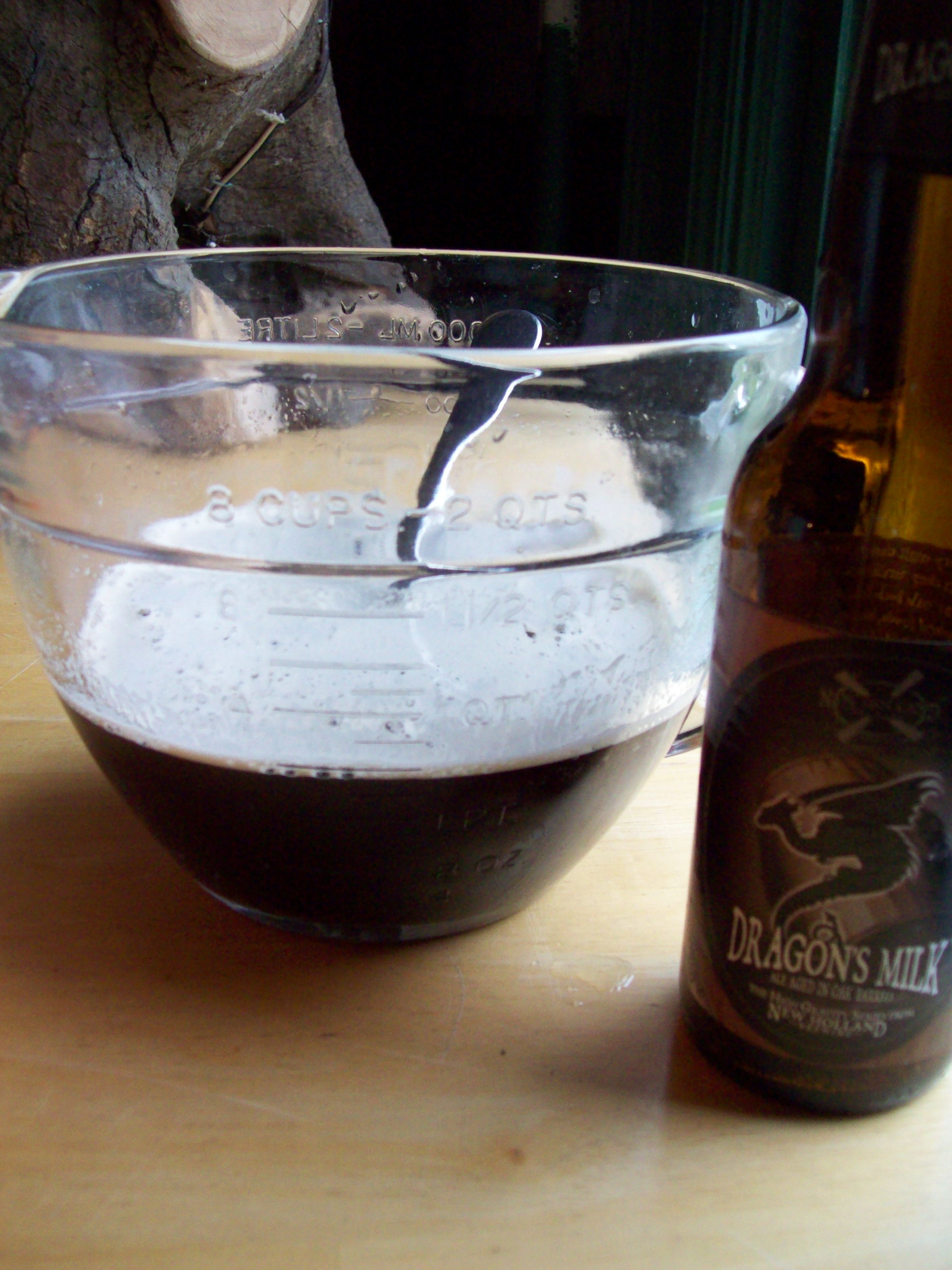 Step 5: prepare beer/salt/sugar brine
Step 5: prepare beer/salt/sugar brine
Depending on the character of the eggs when you brine them they may be a little "hard" and "poppy" when you bite down on them. They soften up a bit when heated during cooking and are easier to eat.
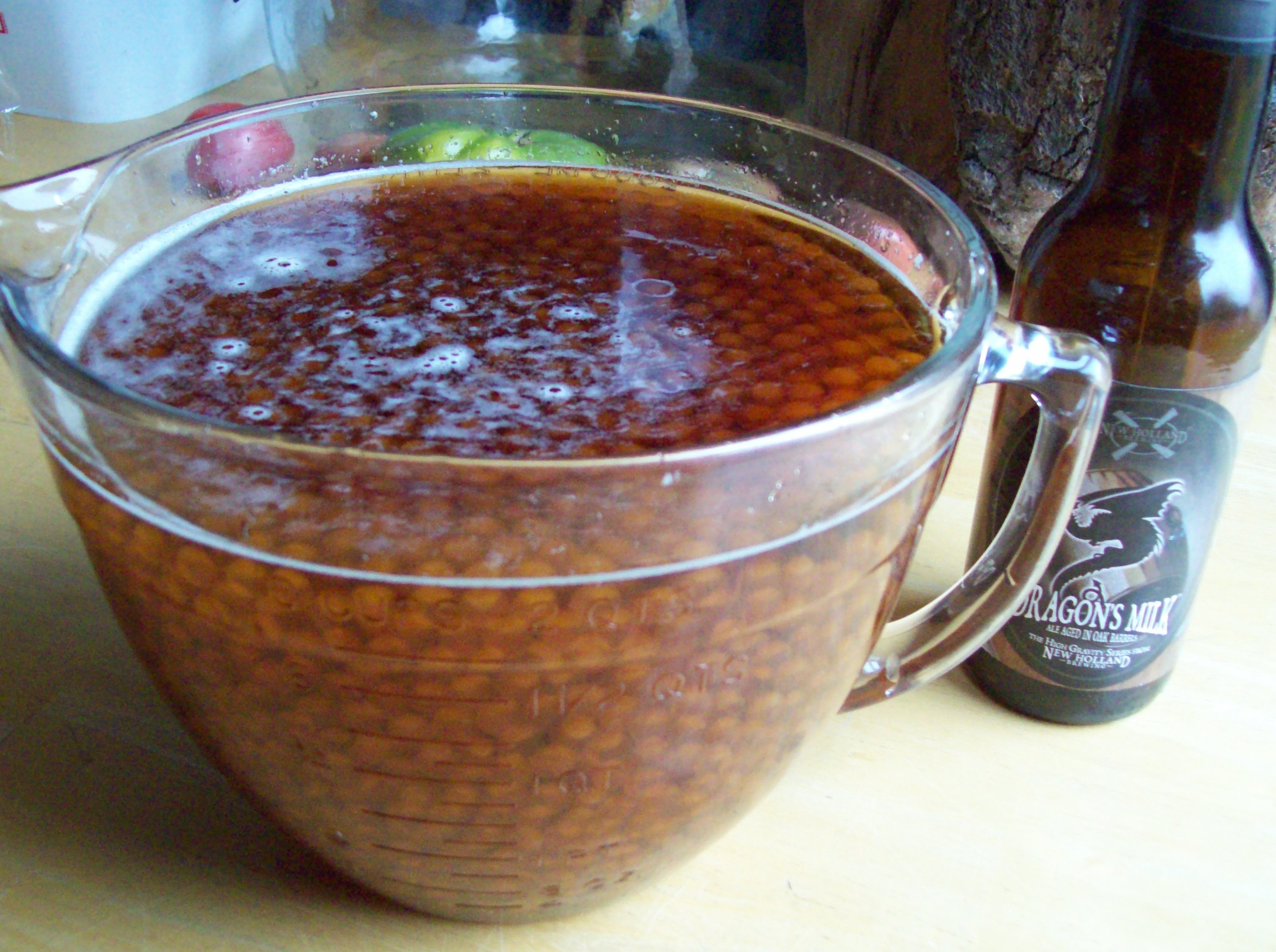 Step 6: cure eggs in beer/sugar/salt solution for 2-3 hours
Step 6: cure eggs in beer/sugar/salt solution for 2-3 hours
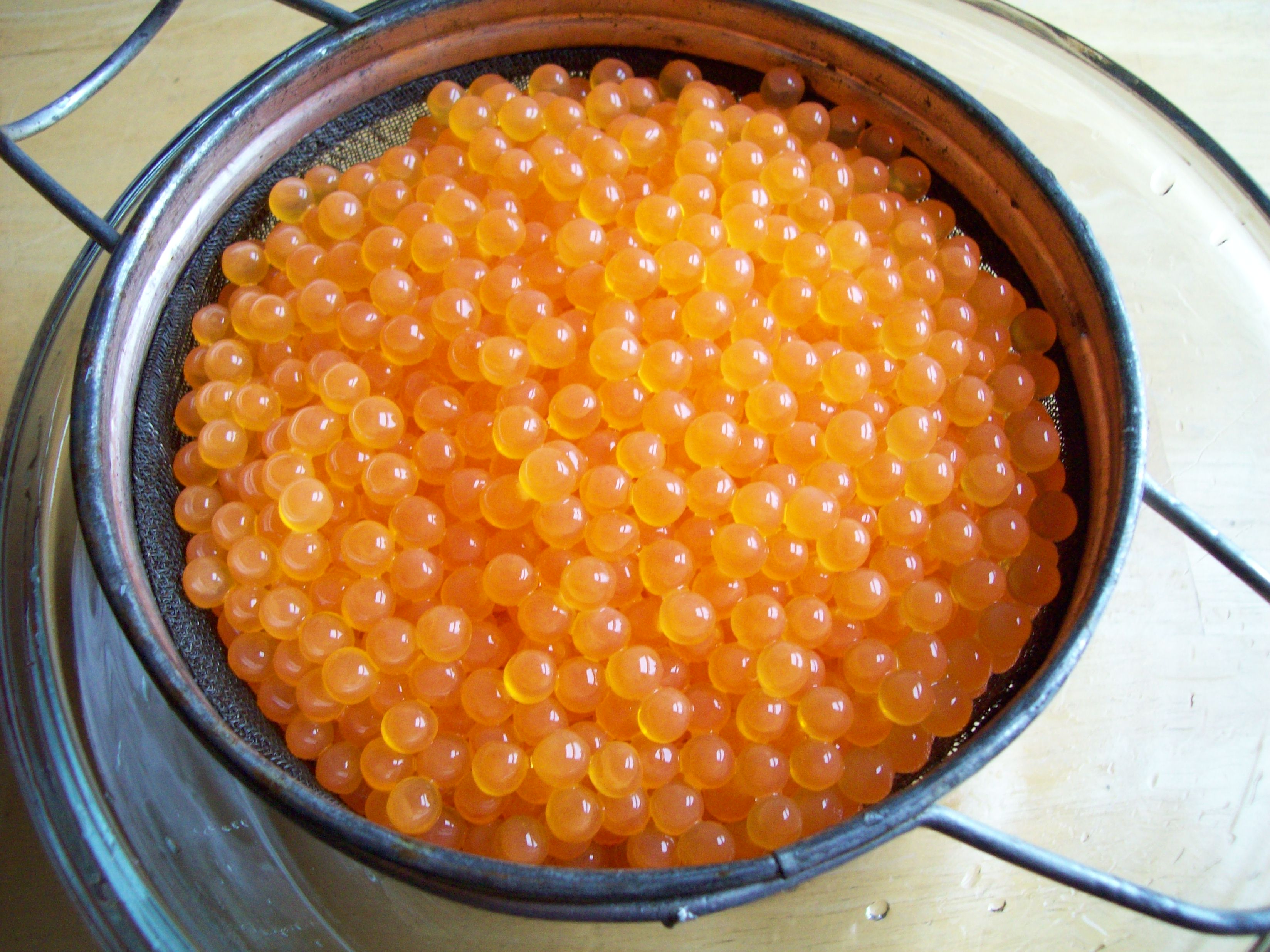 Step 7: drain eggs
Step 7: drain eggs
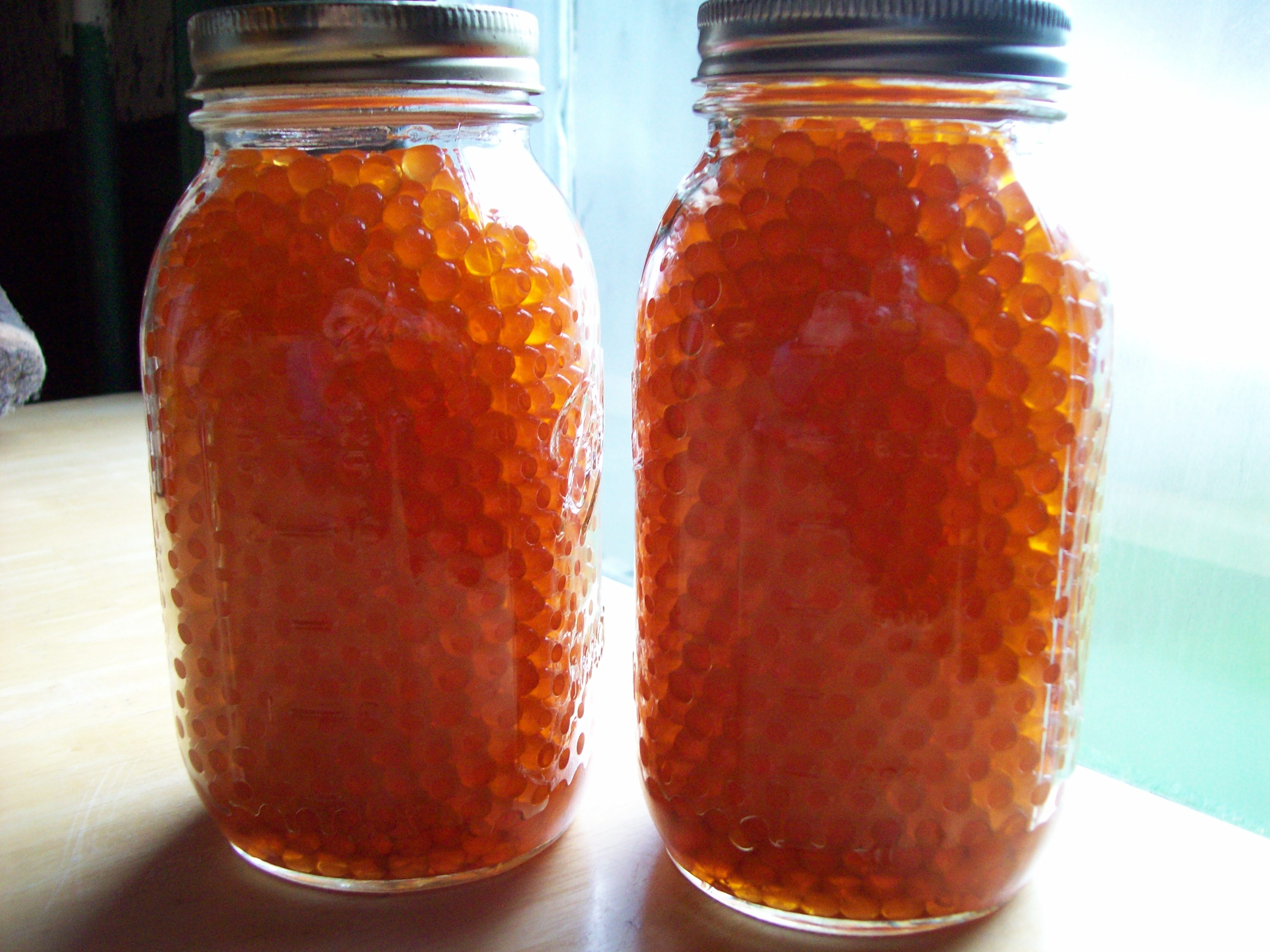 Step 7: jar the eggs and refrigerate (good for 2 or 3 weeks)
Step 7: jar the eggs and refrigerate (good for 2 or 3 weeks)
Below is a simple recipe to add a little color and interest to your breakfast, with beer cured salmon roe.
Scrambled Eggs with Roe & Chives:
- Cut a few chives from your herb pot and scissor them up into tiny pieces.
- Whip three eggs in a bowl with a bit of cream or milk and salt & pepper.
- Melt butter in skillet over medium heat and sweat a little diced garlic and onion (around a teaspoon each).
- Add a tablespoon of the salmon eggs to the skillet and cook them for a minute or so, stirring them around a few times. This will soften them up and let them soak up some of that good butter/garlic/onion flavor.
- Pour in the egg/cream mixture, sprinkle the chopped chives over the top, and move it around like you do for scrambled eggs, until it's nice and fluffy and done. Drop a teaspoon of butter on top as it's about to finish cooking.
- As soon as the eggs are plated turn the heat up a little and lay a slice or two of country bread, buttered on both sides, in the skillet to quickly toast it, flipping it once. About a minute and a half. Pour yourself a cup of coffee in your Stumpjack mug while the bread is browning.
- Bonus points: take a picture of it all and share it with us and post it on facebook.
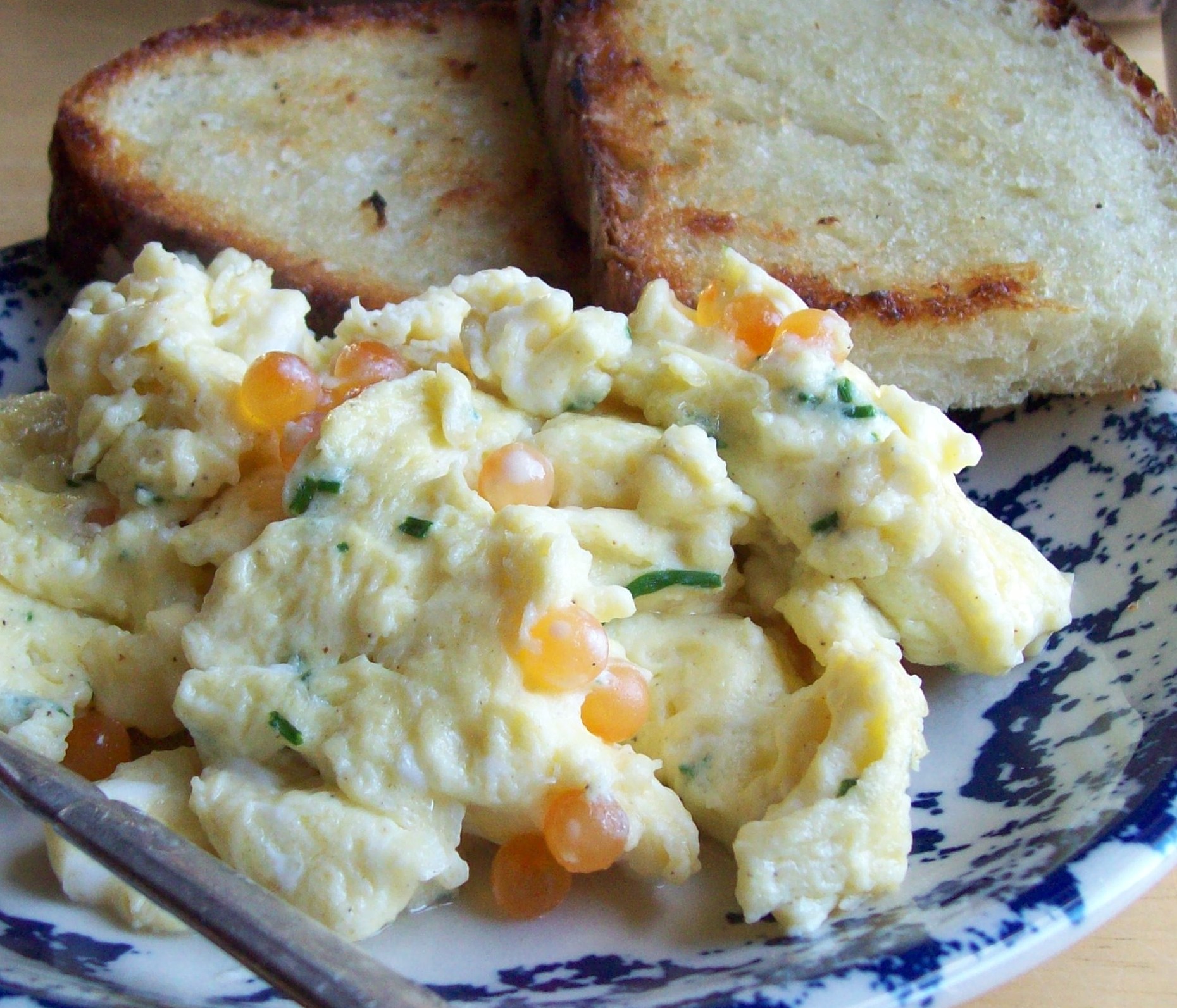 Final Step: eat 'em up!
Final Step: eat 'em up!
 Sunday, October 30, 2011 at 9:51AM
Sunday, October 30, 2011 at 9:51AM 
